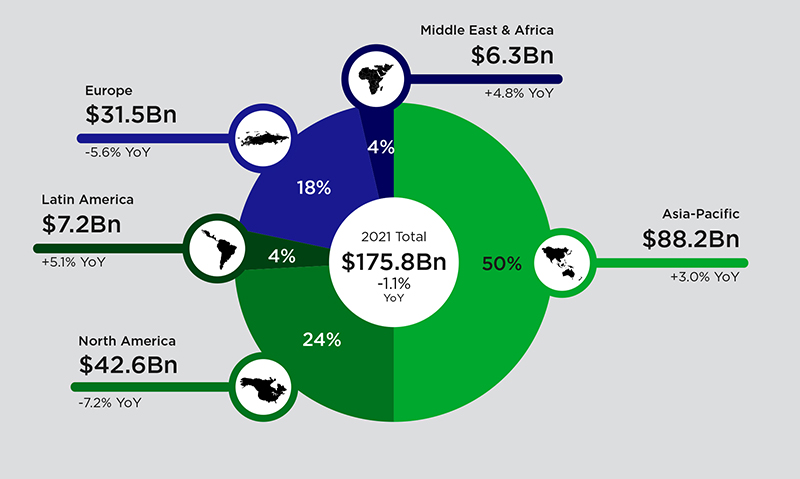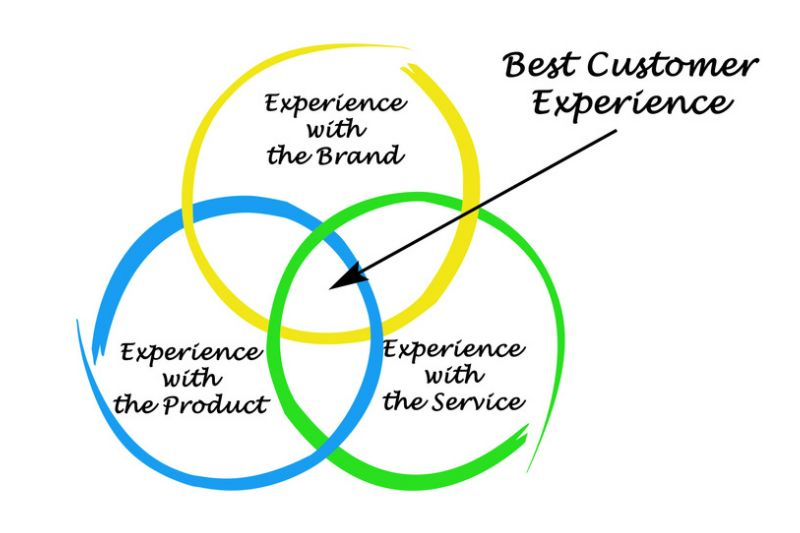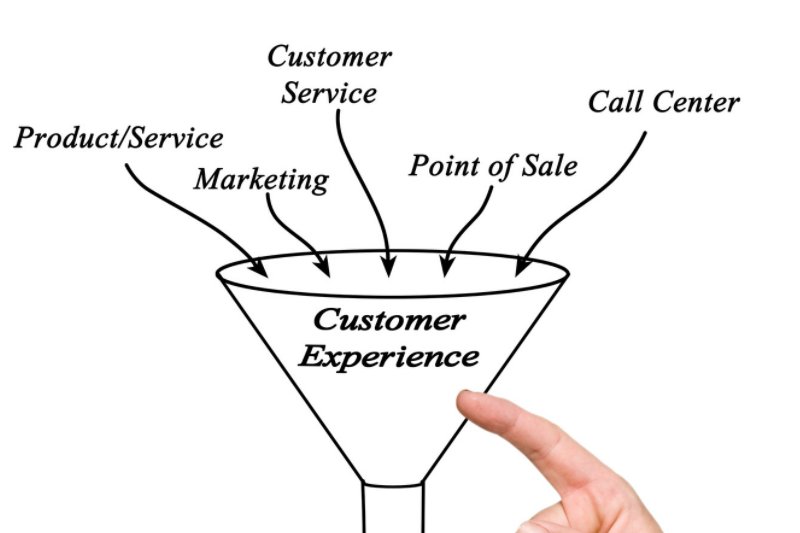Let’s face it: nowadays, the gaming industry is dominated by fierce competition, easy or completely free market entry for game developers, and a fairly high dropout rate, the last one becoming a real concern. Therefore, succeeding in this market is not just about creating the best products, but providing the best customer experience.
What does it mean?
Apart from creating a user-friendly interface, implementing the latest trends in the gaming industry, whether we are talking about AR, Ai, or VR, is extremely important. But they are not enough. You also need to know when and how to react when things go wrong – whether it’s a bug, a computer problem, or a less simple interaction with other players. Why? Because if you fail in fixing such situations, it’s very easy for your customers to lose their patience and go to the competition.
A short overview of the gaming market

The statistics show that the gaming industry is booming and will continue to grow in the upcoming future. According to a Mordor Intelligence Report, the gaming market was valued at $198.40 billion in 2021, and it’s predicted to hit $339.95 billion by 2027.
Due to the multiple lockdowns and social distancing measures caused by the COVID-19 pandemic, many people played games to pass the time. As result, the online traffic of the gaming platforms was booming, while video gaming trends experienced a massive surge in players and revenue.With $88.2 billion in 2021 alone, the Asia-Pacific region dominates the industry by game turnovers, making up 50.2% of all game revenues and 50% of the global market. Reaching $45.6 billion, China is by far the primary driver here, but also Japan and South Korea show high potential for market growth. Asia-Pacific is followed by North America which comes in second place with $42,6 Bn and 24% of the share market, and Europe, which reached $31,5 Bn last year.

If we take a closer look at the gaming market in terms of audience, you’ll see that there were 3.0 billion players across the globe in 2021 – up +5.3% year on year from 2020 – and it’s forecasted to reach 3.32 Bn by 2024.
Due to the development of smartphones, mobile is the main sector to see growth, accounting for 45% of the global market and revenues of more than $70 billion US. According to Newzoo, mobile is followed by console gaming as the second-largest digital gaming segment ($49.2 billion in revenue in 2021 and 28% share market), and PC games, with $33.3 billion and 189% share market, in third place.According to Limelight Networks’ report on The State of Online Gaming, mobile phones are also the primary gaming devices on a global scale, but preferences vary by country.
But mobile games are not the only trend that reshapes the industry. With professional video game tournaments being favorite among competitors and consumers, esports, for example, are becoming increasingly popular, especially on platforms like Twitch. In addition, battle royale is one of the game genres that is making its way through this industry.In the gaming industry, download speed matters, too. Globally, 87% of gamers consider downloading games a frustrating process, interruption being their top issue. 38% of gamers consider this as their main concern.
Multiple gaming optionsBut gamers have a vast array of gaming possibilities to choose from. Therefore, providing great customer service is essential to increasing customer retention and satisfaction. With mobile and online sectors helping games to become more accessible than ever to a wider audience, you can assume that anyone is or can become a player.
Gamers are everywhereGamers are everywhere, so customer support should also be everywhere. Phone, email, and in-person support are no longer enough. In addition, customer support needs to be knowledgeable, personalized, multilingual, and available 24/7.
What does all this mean?First, there are plenty of gamers out there, and they are playing a lot of different games. Second, the label “gamer” doesn’t include only the total devotees who spend countless hours in front of their computers or consoles. Thanks to smartphones, we may say that all of us are gamers now, in one way or another. In other words, the gaming community has grown and become more diverse, while their demands and needs are more complex. Therefore, the gaming publishers, and especially their support teams, need to be efficient, professional and prepared to provide a great customer experience to their gamers.
What do gamers look like these days?
Players expect a very short response time: when a game crashes, it destroys their customer experience. At the same time, gamers expect the problem to be solved as soon as possible, so they can continue their playing.
They are active in forums and online gaming communities, that many times are also support centers: gamers are usually very active in online communities and forums, sharing opinions and tips about their favorite games. Most often, they also tend to reach other gamers to see if anyone has experienced the same issue as theirs and how can find a solution. In many cases, if they contact your support team means they didn’t solve their issue, and probably, they are angry!
Players don’t see the game just as a product: nowadays, gaming is about having a whole experience and, for many of them, a source of identity and community.
Gamers are willing to pay for playing, even if they can get them for free: this means they expect great customer service in exchange for their money.They have multiple options to choose from: players can access games in many ways and across multiple platforms, so when they have a bad customer experience, they can move on to the next game immediately. Ryan Racioppo (creator of the Roshpit Champions game) says, “If they’re not having fun, they can quit. If their friends don’t play, they’ll quit. If they get angry, they’ll quit. The bottom line is that your customers have so much choice, they can jump ship at any time.” So when gaining a new player, don’t take his loyalty for granted.
As the industry continues to grow, the competition becomes fiercer, and the development of a game involves more resources. That’s why it’s so important for publishers to provide a world-class customer experience. This means not just keeping the existing customers, but also getting new ones. But when you fail, you’ll end up getting bad reviews, losing customers, and ultimately, having higher user acquisition costs.If we haven’t convinced you yet, keep reading to see the main benefits you get when you meet your players’ expectations.
Why customer experience is more important than ever
Increased revenues
Research shows that the average overall customer satisfaction rate is about to 86%, your players’ experience when interacting with your brand being the key to success or failure. That’s why you need to have not only the ability to deliver what you promised but also to surprise your customer with extra care and support.Keep in your mind that a totally satisfied customer generates up to 2.6x more revenue than a somewhat satisfied customer and 14x more revenue than a somewhat dissatisfied customer.
Your main goal is to create a consistent experience across all touchpoints and to exceed your own standards and those of your customers. By keeping an eye on your entire customer journey, you make sure that the promise of a positive experience is kept and that you provide superior service.New gamers are more likely to turn into loyal players
Creating a great customer experience is a valuable asset and really impresses the players, making sure that they will continue to play your game in the future.Acquiring a new customer costs 7 times more than maintaining an existing one. Therefore, investing in your existing customers will pay off and it’s only a matter of time before you see positive results.
But what happens if your customer is unhappy?There are a few things that influence your brand reputation more than how you respond to complaints. Customer service is an important part of developing brand loyalty, and how you respond to dissatisfied consumers will determine what they say about you afterward.
There are several ways to handle negative reviews, but the basic rule is to respond politely and make sure you do your best to resolve their issue. Make your customer feel heard and cared for and you will find that they will pay in the long run. In fact, did you know that 95% of people who have had a bad experience are willing to give the brand a second try if they know that their problem has been solved correctly?A community of game (or brand) advocates is a powerful tool

Here customer advocacy comes in and that’s why is so important.
By focusing on creating amazing customer experiences and embodying the desire for your business to go above and beyond, you’re creating an advocate out of every game player. And then you can use them, as well as user-generated content to engage new players, reinforce brand loyalty and recommend the game to other potential consumers.Standing out is no longer an issue

When everyone is publishing great games, it’s getting harder and harder to stand out from the crowd. But having a competitive advantage is huge, and customer experience is the perfect tool to help you differentiate yourself from the competition.
As Jerry Gregoire, CIO at Dell, says, “The customer experience is the next competitive battleground.” This way, players will no longer compare only games and prices, but also the additional services you offer and user experience.With 88% of potential clients reading reviews to determine the quality of a business’s customer experience, consumer feedback has become an invaluable tool. Therefore, implementing a player-centric strategy, and standing out from your competitors is the sure way to make sure today’s customers become tomorrow’s game advocates.
Trusted relationships are so important in uncertain timesAccording to Statista, 763.51 million users applied ad blockers in 2019. This doesn’t necessarily mean people hate ads, but they want to filter which ads to see. However, we have to mention that people don’t trust advertisements so much as in the past.
And then, how can you build a strong relationship with your customer? The right answer is: use personalized content and experiences. Making every player feel special and unique will send a positive message: they are cared for and important to your business.By doing so, you have a better chance of building trust with them, and therefore creating a strong, long-lasting relationship.
Final wordsThere is no doubt that the feelings experienced by your players about your game and your brand are the key to success. Identifying key points of contact during your customers’ journey, gathering players’ feedback to improve or keep repeating those experiences, and analyzing trends will help you improve your customer experience and have friends and family tell you about the product you created.






